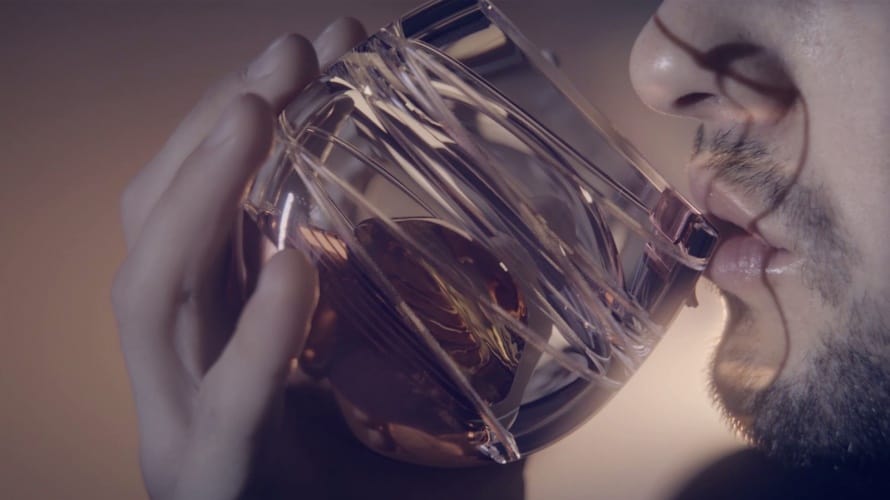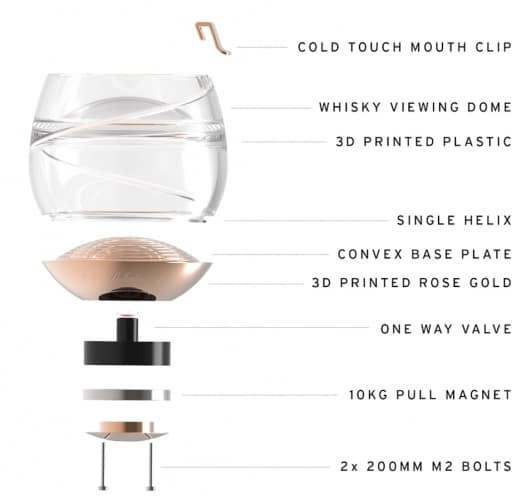Cynics are often asking what the point of space science is. Why go to the cost and trouble of lifting material and people into orbit? One experiment on the International Space Station might provide an interesting example of the potential of space: improving whisky.
When whisky is freshly distilled, it’s a clear, colourless liquid with a rather harsh taste. It only acquires its characteristic colour and much of its flavour by being left to sit for several years in barrels made from charred oak. These are never new, but have always been previously used to store or mature other alcoholic drinks, often sherry or American bourbon whiskey. The spirit extracts flavour and colour compounds from the barrels, some from the wood itself, some from the remnants of its previous contents that have soaked into the barrel staves. But this process is poorly understood and, like many things in the whisky industry, surrounded in superstition (the alcohol that evaporates during maturation is known as ‘the angel’s share’).


The Ardbeg distillery, located on the Hebridean island of Islay and known for its pungent whisky with smoky, medicinal tastes of the peat that blankets the island, decided to dispel some of the mystery by sending some of its spirit into space. The experiment was designed in collaboration with a Houston, Texas-based company called NanoRacks, to investigate the effect of microgravity on terpenes, molecules which are the building-blocks of flavour in whisky and many other foods; they are also used in fragrances, and in pesticides and some medicines. Ardbeg send NanoRocks a sample of 6ml of freshly-distilled spirit along with some shavings from the inside of one of its Bourbon barrels. NanoStix packaged the sample in one of its experimental tubes, some of which were sent into space, while others were returned to the distillery to act as control samples. The samples were left to mature for 971 days; not as long as they would normally have in the barrel but enough to determine how flavour was developing. They were then analysed by gas chromatography and mass spectroscopy, as well as by tasting.
In terms of taste, Ardbeg’s expert samplers detected major differences between space and control samples. The control had “a woody aroma, reminiscent of an aged Ardbeg style, with hints of cedar, sweet smoke and aged balsamic vinegar, as well as raisins, treacle toffee, vanilla and burnt oranges” while “its woody, balsamic flavours shone through, along with a distant fruitiness, some charcoal and antiseptic notes, leading to a long, lingering aftertaste, with flavours of gentle smoke, tar and creamy fudge.” The space sample, meanwhile, had an “intense aroma” with “hints of antiseptic smoke, rubber and smoked fish, along with a curious, perfumed note, like violet or cassis, and powerful woody tones, leading to a meaty aroma. In the moth, “The taste was very focused, with smoked fruits such as prunes, raisins, sugared plums and cherries, earthy peat smoke, peppermint, aniseed, cinnamon and smoked bacon or hickory-smoked ham. The aftertaste is intense and long, with hints of wood, antiseptic lozenges and rubbery smoke.” These differences were down to different extraction of flavour compounds from the wood, according to Ardbeg’s director of distilling, Dr Bill Lumsden. Extraction of lignin breakdown products was lower in the space sample, but extraction of tannin breakdown products was higher.
Ardbeg now wants to undertake more research. “The difference in simulated maturation conditions has resulted in a dramatically different flavour profile, which will give rise to the potential development of new flavours, and in particular new Ardbeg whisky expressions,” Lumsden says in a paper on the research. “The difference in flavour between the ISS and control samples is so marked, that further analysis will be carried out to elucidate the creation of the different flavours.”
Astronauts who fancy a tipple may also have cause to thank another distiller, Ballantine’s, which has teamed up with design consultancy Open Space Agency to design a glass for drinking whisky in microgravity. The glass has a gold base plate that creates surface tension to hold the whisky in a reservoir at its base, while a spiral groove in the glass itself conveys the whisky out of the reservoir to a gold mouthpiece from where the liquid can be drunk. The glass is filled from a special nozzle and magnetic docking system that injects whisky from a bottle into the base of the glass.
Open Space designer James Parr explained: “We are using inertia and the notion that the whisky will stay at rest while the bottle and the glass is moved around the resting liquid. Motion one pulls the whisky into the base of the glass, then motion two is to roll the whisky in your hand and let the heat transfer through the metal base into the liquid itself. Step three involves then moving the glass down prior to moving your nose into the space where the vapours are resting. The final motion is to move the glass upwards to capture the liquid in the base plate and let it enter your mouth.”
The glass was made by 3D printing from a clear plastic; the metal mouthpiece ensures that it feels similar to glass when drinking.




Project to investigate hybrid approach to titanium manufacturing
What is this a hybrid of? Superplastic forming tends to be performed slowly as otherwise the behaviour is the hot creep that typifies hot...